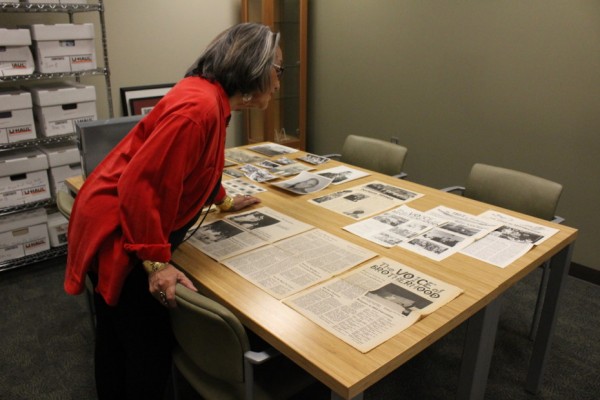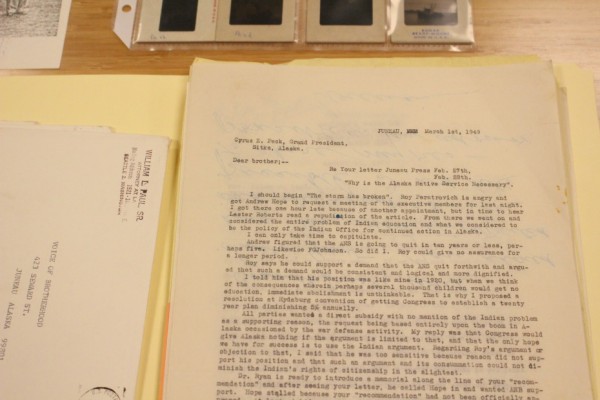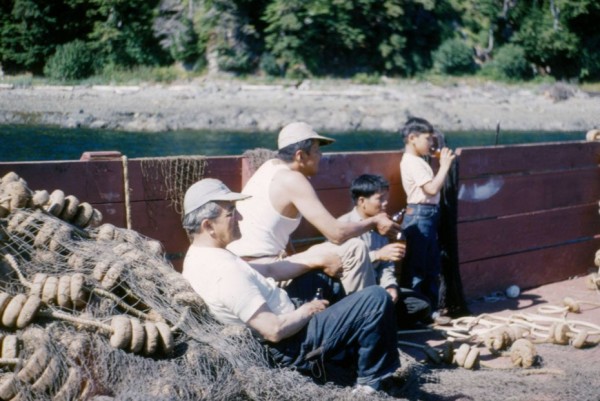A recently donated collection of letters, essays, photographs and newspapers is shedding new light on the history of Alaska Native civil rights. One particularly controversial figure in the documents spent half a century advancing Alaska Native causes. He’s the namesake of Sealaska Heritage Institute’s new archives.

“Here look at this: ANB people and traditional leaders. Ooo, I see my grandmother over there,” says SHI president Rosita Worl, She stands over a table of photographs of ancestors in regalia, Alaska Native Brotherhood meetings and less formal gatherings–relaxing around a table for dinner.
“Cyrus Peck, Walter Soboleff. Here, that looks like Betsy Sophia.”
The collection spans from the 1940s all the way to the 70s and was donated by brothers Ray and Cy Peck. The sons of Cyrus Peck Senior, who published the newspaper Voice of the Brotherhood.
“Remember at this point and time we don’t have social media. We don’t even have TV. So the newspaper print is really important in terms of educating people about what was going on, coalescing people into political action.”
Some of the photos were taken by Ray Peck. He remembers his father giving him a Polaroid camera when he was a teen and asking him to take pictures of the Alaska Native Brotherhood.
“I used a Polaroid ’cause I could always tell and take another one right away. And they were black and white and they’d turn out perfectly for printing.”
He says, at the time, he didn’t know he was capturing history. He would paste the photos on the freshly typed sheets from his dad’s typewriter and run them off to the printer at The Juneau Empire. After his dad passed away, he found boxes full of old newspapers and letters and thought…
“Get ’em to a safe place instead of sitting in my house. And maybe people will get some information out of it.”
Peck turned over the boxes to the William Paul Archives in the Walter Soboleff Building. He donated correspondence between his dad and Paul, who was an important but sometimes divisive leader in the brotherhood.
“He had progressive ideas and he stepped on a lot of feet.”

You might not know attorney William Paul, by name. But you’re probably familiar with some of stuff he did: fighting for voting rights and the Alaska Native Claims Settlement Act.
“He is the father of land claims. He really brought it to the forefront.”
A Tlingit, Paul was the first Native elected to office when Alaska was a territory, and he was a leader in the Alaska Native Brotherhood. The organization formed in 1912 to combat segregation and racism. Paul was later instrumental in this.
Worl knew him. She says he was a mentor growing up but recognizes he was also controversial.
“Both within the Native community and the non-Native community. The non-Native community thought he was arrogant and brash.”
She even calls some of his political activity unethical.
In the 1920s, a historian says Paul became politically powerful by helping Alaska Natives vote — for exactly whom he wanted them to vote for. He prepared cardboard cutouts that covered ballots and left only his picks. With the cutouts, literacy wasn’t a barrier.
He was also accused of taking campaign donations from salmon canneries, an industry whose unsustainable practices he vilified. Worl says tactics like this might be part of the reason he’s not more well known. Still, he’s an important figure.
“Here you have an indigenous population taking the laws of the oppressor to protect themselves,” she says. “I should begin, the storm has broken. Roy Peratrovich is angry…”
Rosita Worl reads a letter to Cyrus Peck Senior from Paul. It’s about segregation in the schools, dated March 1, 1949.
“From there we went on and considered the entire problem of Indian education and what we consider to be the policy of the Indian office…”
With the newly acquired materials, she hopes scholars and individuals can piece together a complex narrative of Alaska Native Civil Rights.
“More often when you read histories, Native people are seen as passive recipients of Western culture, they aren’t viewed as the active individuals in pursuing these rights. With these documents, we’re able to demonstrate that. We’re able to portray history from our perspective.”
Worl encourages the public to donate items as they find them. Ray Peck says he may have a few more boxes to rummage through back home.





